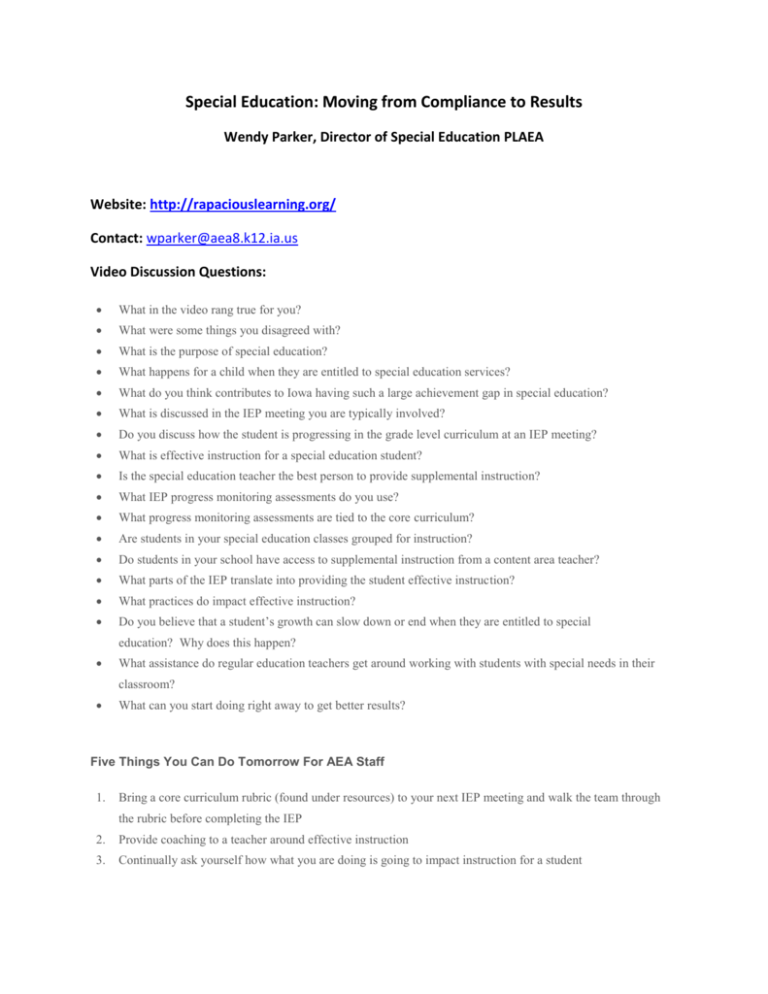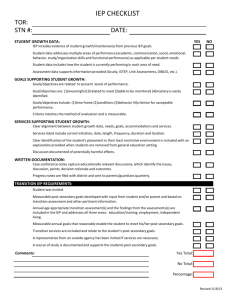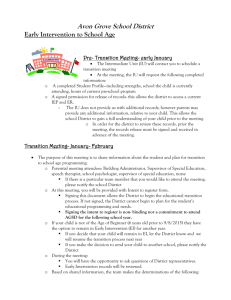Session resources - School Administrators of Iowa
advertisement

Special Education: Moving from Compliance to Results Wendy Parker, Director of Special Education PLAEA Website: http://rapaciouslearning.org/ Contact: wparker@aea8.k12.ia.us Video Discussion Questions: What in the video rang true for you? What were some things you disagreed with? What is the purpose of special education? What happens for a child when they are entitled to special education services? What do you think contributes to Iowa having such a large achievement gap in special education? What is discussed in the IEP meeting you are typically involved? Do you discuss how the student is progressing in the grade level curriculum at an IEP meeting? What is effective instruction for a special education student? Is the special education teacher the best person to provide supplemental instruction? What IEP progress monitoring assessments do you use? What progress monitoring assessments are tied to the core curriculum? Are students in your special education classes grouped for instruction? Do students in your school have access to supplemental instruction from a content area teacher? What parts of the IEP translate into providing the student effective instruction? What practices do impact effective instruction? Do you believe that a student’s growth can slow down or end when they are entitled to special education? Why does this happen? What assistance do regular education teachers get around working with students with special needs in their classroom? What can you start doing right away to get better results? Five Things You Can Do Tomorrow For AEA Staff 1. Bring a core curriculum rubric (found under resources) to your next IEP meeting and walk the team through the rubric before completing the IEP 2. Provide coaching to a teacher around effective instruction 3. Continually ask yourself how what you are doing is going to impact instruction for a student 4. Only correct an IEP if as a result of that change the student’s instruction or program will be positively impacted 5. Review progress monitoring data and immediately talk about what the instruction needs to look like as a result of that analysis Five Things You Can Do Tomorrow For Sped Teachers 1. Bring a core curriculum rubric (found under resources) to your next IEP meeting and walk the team through the rubric before completing the IEP 2. Find time to collaborate with a core content teacher. 3. Attend core curriculum PLC discussions with regular education teachers in your building 4. Become familiar with grade level core curriculum standards for the grade levels you support 5. Ask for student progress monitoring data from the regular classroom Five Things You Can Do Tomorrow For Administrators 1. Include special education teachers in the same PD the core content area teachers are receiving 2. Make sure students are grouped for instruction when pulled out for specially designed instruction 3. Do not blindly follow rules you are told that deny access to special education students. Do your own research, don’t take one person’s answer, push back, find someone you trust to consult. 4. Change the conversation in IEP meetings you attend. Ask questions about progress in, and access to, content area instruction. 5. Evaluate instruction in special education classrooms by doing more walk-throughs and provide support when the instruction is not intensive and effective. Poor instruction must not be tolerated. AEA 267 Core Curriculum Rubrics: https://www.aea267.k12.ia.us/iowacore/resources/rubrics-learning-progressions/standards-based-rubrics/




